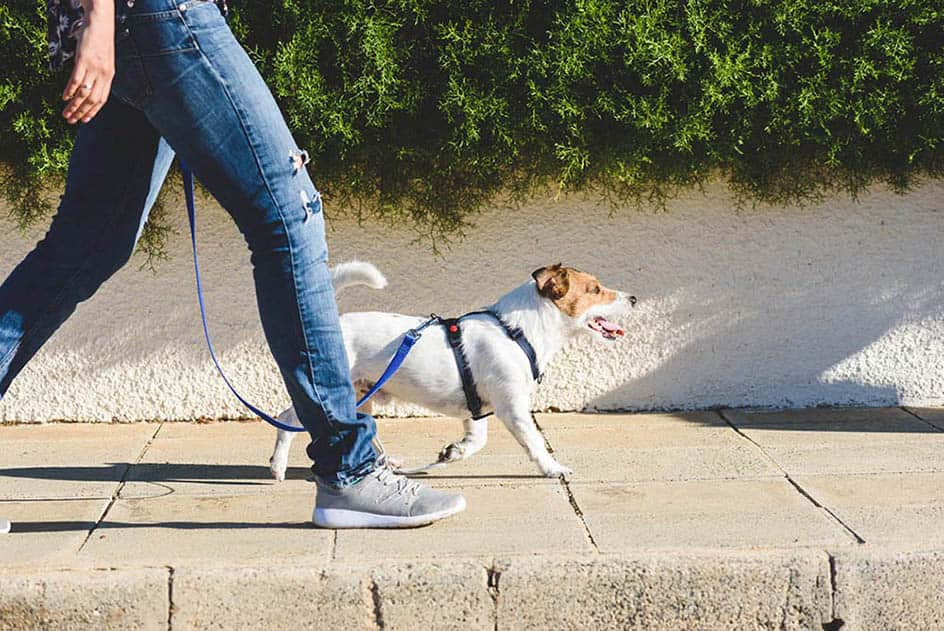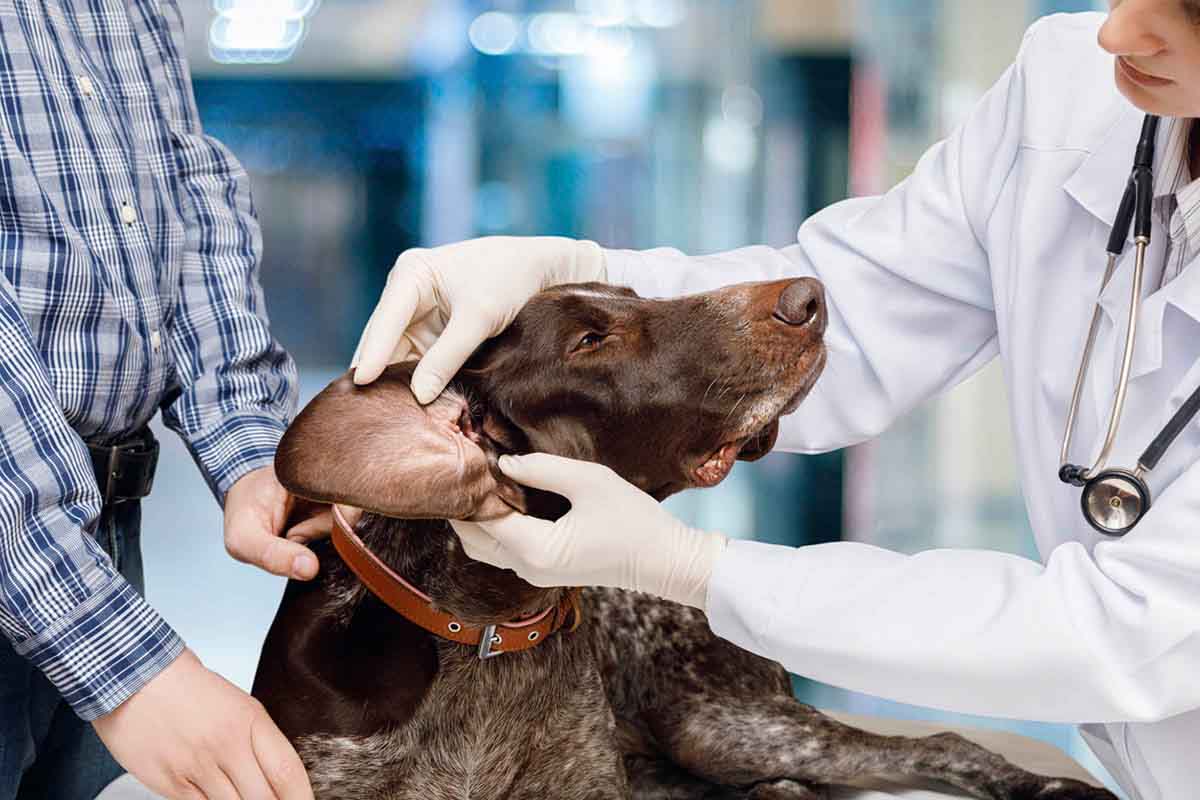Why Do Dogs Yawn?
There are at least five different ways to interpret dog yawning. One is an indicator of stress or anxiety. Here's what to know.
Humans aren’t the only animals who yawn when they’re sleepy. Almost all mammals, birds, reptiles, and even fish yawn. Most pet parents will probably agree that it’s pretty darn cute when dogs yawn, but is there something they’re trying to tell us? Why do dogs yawn?
Why Do Dogs Yawn?
Yawning is a form of communication for dogs and can have more than one meaning. Consider the context of the yawn to understand what your dog is feeling. Like humans, dogs may also yawn out of tiredness or boredom, but they may also yawn during times of stress.
Why Do Humans Yawn?
Human yawns are an instinctive reflex that often occurs before or after falling asleep, when bored, when we see someone else yawn, or when you hear someone talk about yawning. The true function of yawning isn’t fully known, but there are a few theories.
It used to be thought that yawning was a reflex to get more oxygen to the brain when your body becomes tired. The assumption was that yawning would quickly pull oxygen into your bloodstream and help your brain stay awake. Researchers no longer believe this is true.
More recent research theories posit that since increased body temperature is sometimes associated with excessive yawning, a yawn is the body’s way of trying to cool the brain by increasing blood flow.
Why Is My Dog Yawning So Much?

Yawning is a normal canine behavior and isn’t necessarily cause for concern. While yawning is a normal behavior, excessive yawning can indicate your pooch is dealing with more than just being extra sleepy. Common reasons your dog is yawning a lot may of course be due to tiredness, but can also be the result of stress.
Types of Yawns

Reading your dog’s behavior and the other physical signs they’re giving off will help you figure out what type of yawn your pup is showing you. Notice your dog’s body language, posture, and the general sense you get from them as their owner.
Tired Yawns
Tiredness is the most obvious reason for yawning since it often happens before and after falling asleep. While the theory about getting more oxygen to the brain is pretty much myth-busted, researchers are still trying to figure out if there’s a benefit to the impulse your body has to yawn.
Bored Yawns
Yawning out of boredom can help reactivate your brain when it becomes disengaged. When you lose interest in something, your brain isn’t focused on paying attention to it (also known as being bored). Yawning may be a way to ‘wake up’ the brain by stimulating the face and neck muscles and arteries in the head, which may increase heart rate and circulation to ‘re-engage’ your brain.
Contagious Yawns
Contagious yawning refers to seeing, hearing, or thinking about someone else yawning, which then causes you to yawn yourself. Some research suggests that contagious yawning may be connected to empathy, meaning those who experience it may have higher levels of it. This may explain why we’re more likely to yawn when we see someone close to us do so, including pets. Research found empathy was not necessarily related to dog yawning, however.
Stress Yawns
Excessive yawning in dogs may be a sign that they’re under stress. There can be a number of reasons your dog might be feeling tense, and yawning is a normal self-soothing reaction.
Behaviorists speculate that when dogs yawn in stressful situations, they’re using it as a calming signal to themselves. Yawning may help dogs calm down and be able to better process overwhelming or intense stimuli like loud music, children running around, or feeling uncomfortable around new people or dogs.
Indifference Yawns
One of the types of yawns that may be unique to dogs is the indifference yawn. Both domestic dogs and wild canines have shown examples of this type of communication, which simply means they’re not interested. A dog may yawn when challenged by another dog to show they have no interest in a fight, or when another dog is trying to engage them in play to demonstrate they aren’t interested.
Other Common Signs Of Stress in Dogs

No dog owner wants to see their furry best friend stressed, and recognizing the signs of stress in dogs will make it easier to know when they need your help and how you can make them feel better.
- Panting — open mouth, tongue out, and heavy breathing
- Pacing — walking back and forth, struggling to hold still
- Lip Licking — repeatedly licking their lips or flicking their tongues over and over
- Cowering — hiding, trembling, appearing frozen, and avoiding interactions
- Increased Heart Rate — rapid beating of the heart (more than 200 beats per minute)
- Pinned Ears — ears pushed back and flattened against their head
- Tail Wagging — can indicate a range of emotions, including stress
5 Ways To Help Reduce Stress In Dogs
Try the following to help your dog feel more comfortable and boost his confidence.
1. Invest in Anxiety-Focused Dog Training
Confidence-building dog training sessions help teach your dog to manage their anxiety and help you learn techniques to help them as well. Dog trainers who specialize in anxiety often utilize strategies like positive reinforcement and counterconditioning.
2. Provide a Diet of Fresh, Healthy Dog Food
Experts confirm time and time again that a healthy diet goes a long way for dogs. Ensuring they get the nutrition they need will greatly benefit their overall health and wellness.
3. Get Plenty Of Exercise

Regular exercise for dogs is essential to maintain healthy weight, build and retain muscle, and burn extra energy — including stress! Just like with humans, exercise can improve dogs’ moods and brain function, and benefit their physical health.
4. Try Calming Pet Supplements
Stress is a natural part of life, and some dogs can greatly benefit from stress-relief supplements in tough situations like moving, separation, a new baby in the family, or a new puppy. Natural calming supplements typically include micronutrients and botanicals that work to help your dog handle internal and external stressors and maintain a more relaxed state.
5. Socialize in Safe Situations
Social situations are among the top stressors for some dogs, and giving them a safe space to become comfortable socializing will go a long way in helping with their anxiety. Examples of safe social situations include one-on-one time with another well-behaved dog, or group training classes that focus on socialization.
This content is for informational use only and does not replace professional nutrition and/or medical advice, diagnosis, or treatment. It is not a substitute for and should not be relied upon for specific nutrition and/or medical recommendations. Please talk with your veterinarian about any questions or concerns.








